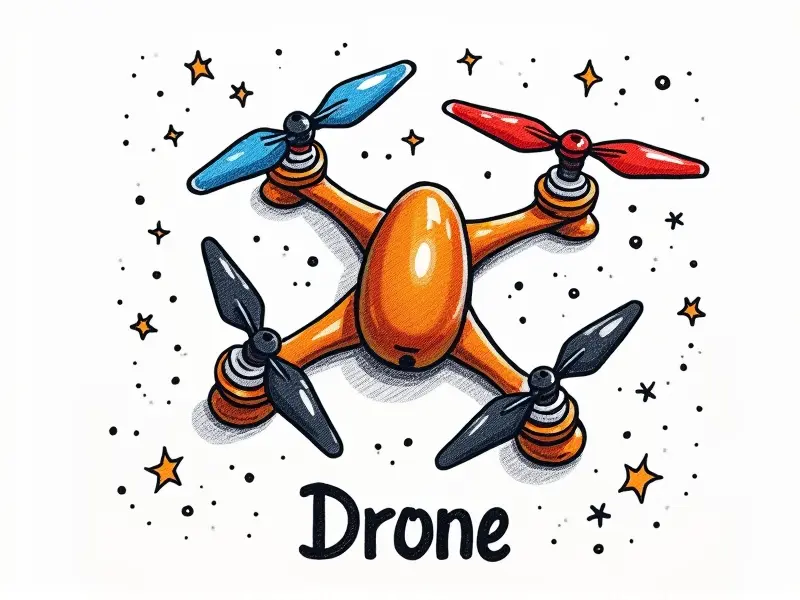How to fly a drone over water

How to Fly a Drone Over Water: A Comprehensive Guide
Flying drones over water can be an exhilarating and rewarding experience, offering unique aerial perspectives of lakes, seas, and other aquatic landscapes. However, it requires careful planning and adherence to specific safety guidelines to ensure both your drone's durability and the quality of your footage. This article will delve into essential techniques, tips, and tricks for mastering drone flight over water.
Mastering Drone Flight Over Water
Flying a drone over water presents unique challenges compared to land-based flights. The most significant concern is the risk of damage from water exposure. To master this skill, you need to understand your drone's capabilities and limitations:
- Waterproofing: Invest in waterproof or splash-proof drones designed for aquatic environments.
- Battery Management: Keep an eye on battery levels; flying over water can drain batteries faster due to the cooler air temperature.
- Wind Conditions: Be mindful of wind speeds and directions, which can significantly impact flight stability.
Tips for Flying Drones Overwater
To ensure a successful and safe drone flight over water, follow these tips:
- Pilot Training: Familiarize yourself with your drone's controls and features before venturing out.
- Safety Gear: Always carry spare batteries, propellers, and a waterproof bag for gear protection.
- Weather Forecast: Check weather conditions to avoid flying during high winds or rain.
Fly Your Drone Safely Over Water
Safety is paramount when operating drones over water. Here are some key safety measures:
- Visual Line of Sight (VLOS): Maintain visual contact with your drone at all times.
- No-Fly Zones: Avoid flying near airports, military bases, and other restricted areas.
- Emergency Procedures: Have a plan in place for emergency landings or water recovery.
Top Tricks for Water Drone Flying
To enhance your drone's performance over water, consider these tricks:
- FPV Goggles: Use first-person view (FPV) goggles to gain a pilot’s-eye perspective.
- Stabilization Features: Utilize advanced stabilization features like gimbal and GPS for smoother footage.
- Practice Hovering: Master hovering techniques to stabilize your drone in windy conditions.
Navigate Waters with Your Drone
Flying over water requires precise navigation. Here are some key points:
- GPS Coordination: Use GPS coordinates to navigate accurately and avoid obstacles.
- Obstacle Avoidance: Be aware of natural barriers such as rocks, islands, or floating debris.
- Airspace Regulations: Adhere to local regulations regarding drone flight over water.
Essential Guide to Water Drone Flight
This guide covers all the necessary steps and precautions for flying drones over water:
- Select Appropriate Gear: Choose a waterproof or splash-proof drone with adequate battery capacity.
- Pre-Flight Checklist: Conduct a thorough pre-flight inspection of your equipment.
- Post-Flight Maintenance: Clean and dry your drone after each flight to prevent corrosion.
Flying Drones Over Lakes and Seas
Different water bodies require different approaches. Here are specific tips for flying over lakes and seas:
- Lakes: Focus on capturing reflections, shorelines, and wildlife from a low altitude.
- Seas: Plan your flight paths to avoid waves and strong currents that can affect stability.
Perfecting Drone Skills on Water
To refine your drone flying skills over water, practice the following techniques:
- Serious Practice Sessions: Dedicate time for regular practice to improve control and maneuverability.
- Trial and Error: Experiment with different settings and configurations to find what works best.
Capture Stunning Water Scapes with Drones
Flying a drone over water offers incredible opportunities for stunning aerial photography:
- Aerial Composition: Use the rule of thirds to compose visually appealing shots.
- Lights and Shadows: Capture the interplay of light on water surfaces during sunrise or sunset.
Waterproof Drone Flight Techniques
To ensure your drone stays functional in wet conditions, follow these waterproofing techniques:
- Battery Wrapping: Wrap batteries in plastic bags to protect against moisture.
- Cover Camera Lenses: Use lens covers or waterproof filters to prevent water damage.
FPV Racing Over Aquatic Areas
If you're interested in FPV racing over water, consider these tips:
- Race Course Planning: Design courses that challenge your skills while ensuring safety.
- Safety Gear for Pilots: Wear protective gear like helmets and goggles to prevent injuries.
Conclusion
Flying a drone over water can be an exciting adventure, but it demands careful preparation and adherence to best practices. By following the tips and techniques outlined in this guide, you'll be well-equipped to capture breathtaking aerial shots while keeping your drone safe from harm. Enjoy exploring new horizons with your waterproof drone!

